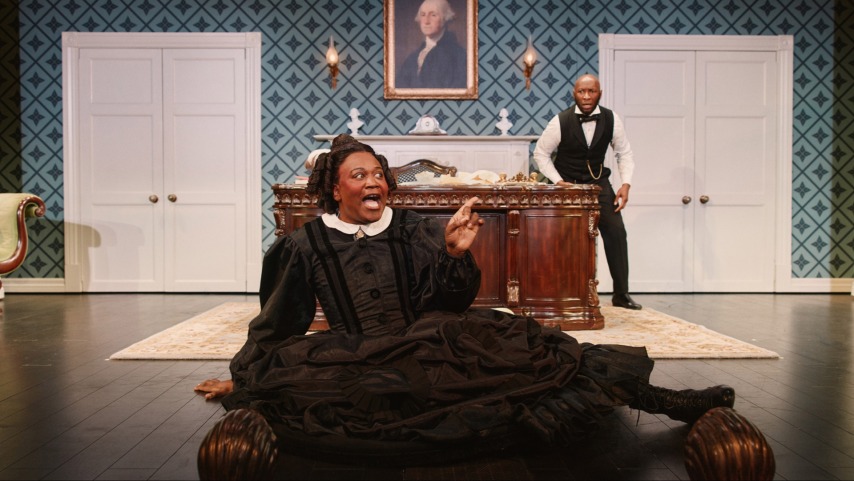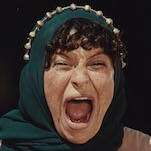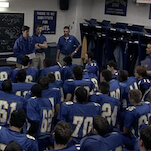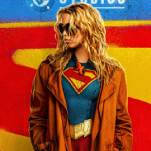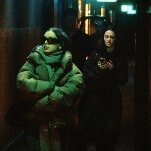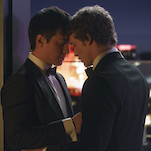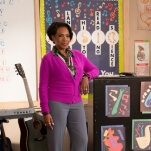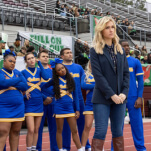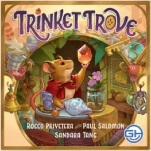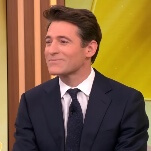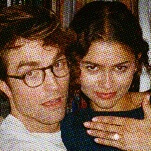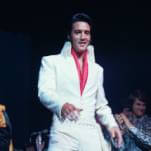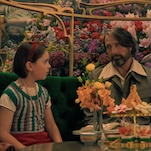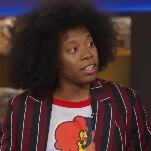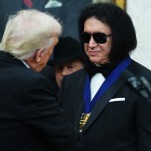Compared to previous Marys Escola and Betty Gilpin, it’s Burgess who has the most musical theater background. Oh, Mary! was the Broadway debut for both of the other actors, whereas Burgess was singing on a professional stage long before Unbreakable Kimmy Schmidt brought him into living rooms the world over. Once Burgess is able to flex these skills, particularly during a climactic musical medley, you finally forget about the other performers and focus on the one in front of you. In Escola’s hands, the finale read almost as a Travis Bickle-like ending fantasy, honing in on Mary’s delusions. In Burgess’, it’s a joyful reward for a long-suffering wife finally liberated.
It’s no small task to step into a role so associated with another performer. The recent film adaptation of Wicked is an instructive case study. When the musical premiered on Broadway, it took two well-known actors and turned them into household names. In the film, Ariana Grande, who clearly admires Kristin Chenoweth’s original stage performance, delivers a Glinda styled on her predecessor’s energy and mannerisms. On the other hand, Cynthia Erivo distances herself from Idina Menzel’s Tony-winning turn, offering a cooler, more collected Elphaba. Whether you prefer one to the other is personal, but there’s no denying that Erivo escaped the comparisons in a way that Grande didn’t.
But it’s even more difficult when the role was also written by said original performer. Hamilton also made Lin-Manuel Miranda a household name, and the character of Alexander Hamilton was written to cater to his specific skills. Though the musical remains a juggernaut on Broadway, with the show apparently going over capacity in late March, critics and fans alike have noted the struggle many actors have stepping into a show where not only the lead but many of the cast had parts tailored to them in a workshop period. (Though it’s among Daveed Diggs’ many talents, rapid-fire rapping in a French accent is not something every actor can convincingly pull off.) But Hamilton is frozen, and audiences expect a show that more or less mimics the Disney+ pro-shot or the original cast recording.
Instead, Oh, Mary! may have found some longevity, should it continue to reimagine the style and skills its lead must bring to the role. Escola’s a good actor, but Oh, Mary! is so written in their voice that it almost started to feel unscripted, as if they were just saying whatever popped into their head. When Burgess takes on the part, it’s still written in Escola’s voice, drawing more attention to the writing and thus the theatricality of the whole endeavor. But casting a performer known for his theatricality not only pays off, but increases the depth of the character. Burgess’ Mary seems most natural in the moment where she’s explicitly performing; it was the role of First Lady that was more ill-fitting.
At the 2025 Writers Guild Awards in February, Escola told me that the most important quality a new Mary could bring to the show was understanding that it’s not just about comedy, but heartbreak. With this in mind, Oh, Mary! has room for many Marys, all of whom could bring something very different to the part. Burgess demonstrates that it’s not the skills inherent to the character but to the performer that will give this show longevity, should it continue past Escola’s return this April. Imagine a Mary with a cabaret background like Bridget Everett, or a Mary with a drag background like Trixie Mattel. If they can nail the comedy and the heartbreak, then the other skills they bring are just gravy. Tituss Burgess may be our musical theater Mary, but hopefully, he won’t be our last.
